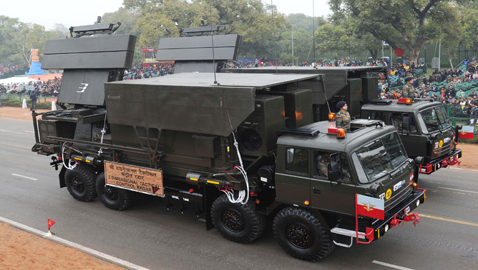
Photo: www.pib.nic.in
Even though the Indian defence sector was opened up for investment more than 12 years ago, the level of domestic as well as foreign investment in the sector continues to remain way below potential.
According to a recently released study titled ‘Self-reliance in defence production: The unfinished agenda’ by the Associated Chambers of Commerce and Industry of India and global advisory firm PwC, the country’s defence sector has immense possibilities for attracting investments, setting up of manufacturing facilities, obtaining technologies and capabilities and generating high skilled employment.
Currently, India ranks among top 10 countries in the world in terms of military expenditure and has established itself as a prime importer of defence equipment. About 1.8 per cent of the GDP is allocated for defence spending of which 40 per cent goes towards capital acquisitions. At present, only around 30 per cent of the defence equipment is manufactured in the country, mainly by public sector undertakings. Even in the case of domestic manufacturing, there is a large import component at both system and sub-system levels.
The study pointed out that while the macro policies for enabling investment in the sector were mostly in place, the large number of micro policies and interpretation and implementation issues acted as deterrent for the domestic as well as foreign industry. The regulatory regimes administered by different departments often worked at cross purposes further inhibiting investments, it added.
The Bharatiya Janata Party led NDA government at the Centre is keen to boost investment in the defence sector, both in R&D and production. It has already taken a number of crucial initiatives to facilitate the flow of investment into the sector. Some of these recent initiatives include pushing for private participation, raising the FDI cap to 49 per cent and rationalisation of the conditions, issuing list of defence equipment that require industrial license and liberalisation of the regulations, issuing of security manual, notification of strategy for export of defence products, simplification of the Make procedure and strategic partnerships and collaborations with USA, Russia, France and Vietnam in defence production, technology transfers and exports.
Given that long-term and large investment along with cutting-edge technology and low economies of scale are imperative for boosting defence production in the country, the study sought increase in the FDI cap to 74 per cent or even 100 per cent.
“Though the FDI cap has been recently increased, 49 per cent may not succeed in bringing investment and advanced technology into defence sector, thus in order to facilitate inflow of capital and setting up of entities of original equipment manufacturers and their suppliers with transfer of technology, it may be desirable to allow either 100 percent or, in case that is not possible, at least a 74 per cent FDI in the sector,” it said, adding that increasing the FDI limit would also facilitate better compliance of offset obligations.
The study stressed that it was essential that government policies created synergies rather than contradictions in order to truly leverage the combined potential of one of the largest defence acquisition programmes of the world, a liberal offset policy and the country’s advantage in terms of low-cost manufacturing and skilled manpower.
It said the government should give full support to the private sector in building an industrial base, further adding that the support needed to be in the form of risk sharing partnerships where the government mitigates some of the non-market risks unique to the industry.
“Global experience has shown that proactive government support in funding R&D, reducing cost of capital to encourage investment, providing stability and assurance in orders and facilitating exports is critical for building a domestic defence industrial base.
This is particularly so because this is a unique monopsony industry in which the single buyer, the government, is also the regulator who sets the procurement rules,” the study said.
The study noted that though there was no lack of investment appetite within the private sector, the uncertainties related to defence procurement, long gestation periods and lack of assured market seriously skewed the risk-return profile and in turn induced a cautious approach on the part of the private sector.
It said measures such as rationalisation of taxes and duties, special support to MSMEs, building capabilities of private industry and skill development could help the Indian defence industry become self reliant.











